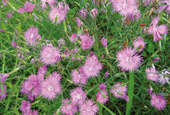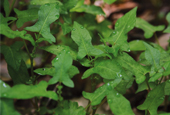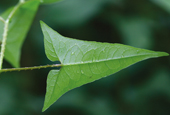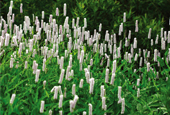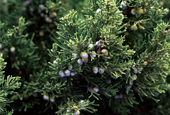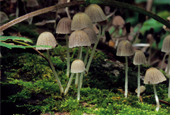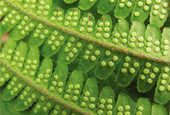View this article in another language
- 한국어
- English
- 日本語
- 中文
- العربية
- Español
- Français
- Deutsch
- Pусский
- Tiếng Việt
- Indonesian
Flora & Fauna of Korea #15
Korea.net publishes a series of articles, “Nature You Meet in the Mountains,” about the peninsula’s mushrooms, insects, trees and herbs & flowers.
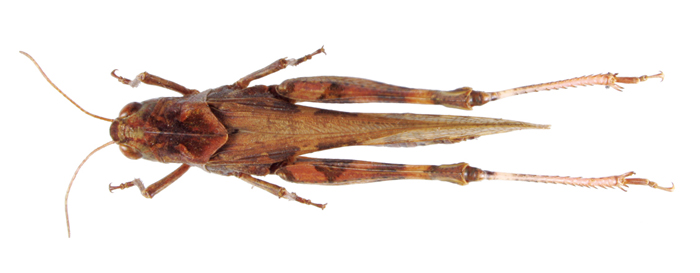
Insects
Name: 팥중이 Patjungi
Scientific name: Oedaleus infernalis Saussure
Distribution: Korea, China, Japan
This locust is about 32 to 45 millimeters in length. The color is brown. The top of the head is wide which tapers toward the back with a triangular base. The anterior thorax is pointed toward the posterior part. The insect is reddish-brown or black-brown. There is an X-shaped pale line in the middle of the thorax. The forewing stretches to the hind wings. The backside of the legs is light brown or reddish-brown and has a number of tiny dots. The rest of the leg is black-brown and has some large grayish-yellow patterns on it. The patterns seem to be more random on females. The hind wings have a black-brown stripe down the center. The underside is light yellow, whereas the surface is relatively darker. It resembles the kongjungi, another species of grasshopper introduced in a previous article. The patjungi is smaller than the kongjungi in terms of its body size. The large X-pattern on the females’ thorax is one of the factors that distinguishes between the kongjungi and the patjungi.
Ecology: These locusts are mainly found in the grass around streams and mountains. It preys on pond plants. It can be seen from late July to October.
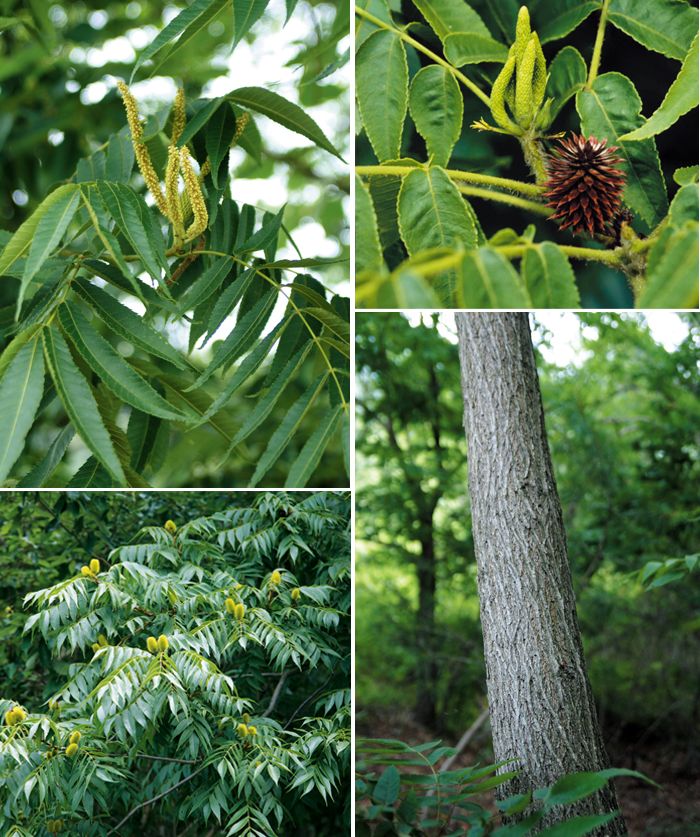
Trees
Name: 굴피나무 Gulpinamu
Scientific name: Platycarya strobilacea Siebold & Zucc.
Type: deciduous broadleaf
Blooming season: May to June
Bearing season: September to November
Distribution: south central region of the peninsula
This tree grows to a height of 12 meters, and grows mainly in the mountains. The bark is grayish-brown. It can crack into thin pieces. The leaves are pinnated, oval and oblanceolate, with a pointy end and sawtooth edges. It is a dioecious tree, and bears nut-type cones.
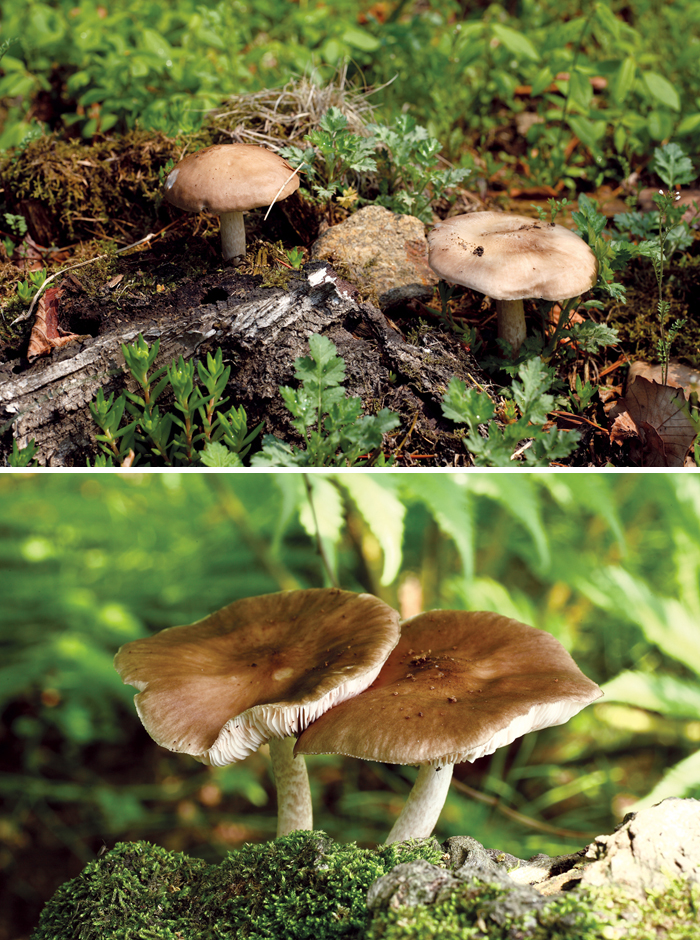
Mushrooms
Name: 난버섯 Nanbeoseot
Scientific name: Pluteus cervinus var. cervinus P. Kumm.
Type: saprophile spore
Print: pink
Edible
This mushroom grows from rotten branches and stumps of dead broadleaf trees. The caps are 5 to 14 centimeters in diameter and get flattened with the passage of time. The surface is grayish-brown, covered by spoke-patterns and fine squamas. The pleats are densely arranged, originally white but turn to rose-pink later on. The stipes are 3.5 to 12 centimeters by 6 to 12 millimeters. The underside is empty. There is a white spoke-pattern on the surface, similar to what is on the cap.
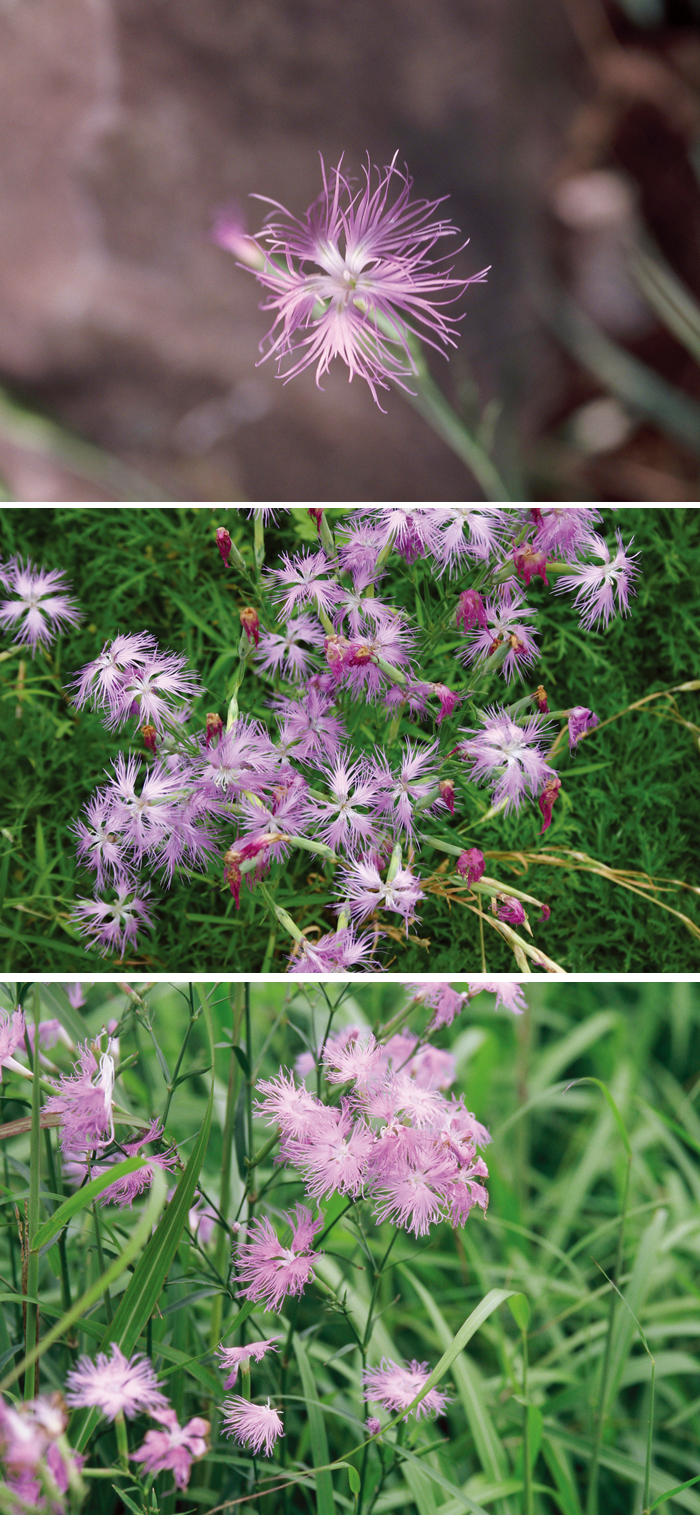
Herbs & Flowers
Name: 술패랭이꽃 Sulpaeraengiggot
Scientific name: Dianthus longicalyx Miq.
Blooming season: July to August
Bearing season: September to October
Distribution: mountains nationwide
This perennial plant grows to a height of one meter. The branches are green, covered by a white powdery substance with no fur. The leaves grow in pairs opposite to each other with pointed ends. The leaves form clusters at the base. It gives bloom to pink flowers. It is a cyme, meaning that it has clusters of flowers where the end of each point produces a flower, so the new growth comes from side shoots and the oldest flowers are at the end. It bears a capsule fruit with an edge split into four parts.
*This series of article about Korea’s insects, trees, mushrooms and herbs & flowers has been made possible through the cooperation of the Korea National Arboretum.
Korea.net publishes a series of articles, “Nature You Meet in the Mountains,” about the peninsula’s mushrooms, insects, trees and herbs & flowers.

Insects
Name: 팥중이 Patjungi
Scientific name: Oedaleus infernalis Saussure
Distribution: Korea, China, Japan
This locust is about 32 to 45 millimeters in length. The color is brown. The top of the head is wide which tapers toward the back with a triangular base. The anterior thorax is pointed toward the posterior part. The insect is reddish-brown or black-brown. There is an X-shaped pale line in the middle of the thorax. The forewing stretches to the hind wings. The backside of the legs is light brown or reddish-brown and has a number of tiny dots. The rest of the leg is black-brown and has some large grayish-yellow patterns on it. The patterns seem to be more random on females. The hind wings have a black-brown stripe down the center. The underside is light yellow, whereas the surface is relatively darker. It resembles the kongjungi, another species of grasshopper introduced in a previous article. The patjungi is smaller than the kongjungi in terms of its body size. The large X-pattern on the females’ thorax is one of the factors that distinguishes between the kongjungi and the patjungi.
Ecology: These locusts are mainly found in the grass around streams and mountains. It preys on pond plants. It can be seen from late July to October.

Trees
Name: 굴피나무 Gulpinamu
Scientific name: Platycarya strobilacea Siebold & Zucc.
Type: deciduous broadleaf
Blooming season: May to June
Bearing season: September to November
Distribution: south central region of the peninsula
This tree grows to a height of 12 meters, and grows mainly in the mountains. The bark is grayish-brown. It can crack into thin pieces. The leaves are pinnated, oval and oblanceolate, with a pointy end and sawtooth edges. It is a dioecious tree, and bears nut-type cones.

Mushrooms
Name: 난버섯 Nanbeoseot
Scientific name: Pluteus cervinus var. cervinus P. Kumm.
Type: saprophile spore
Print: pink
Edible
This mushroom grows from rotten branches and stumps of dead broadleaf trees. The caps are 5 to 14 centimeters in diameter and get flattened with the passage of time. The surface is grayish-brown, covered by spoke-patterns and fine squamas. The pleats are densely arranged, originally white but turn to rose-pink later on. The stipes are 3.5 to 12 centimeters by 6 to 12 millimeters. The underside is empty. There is a white spoke-pattern on the surface, similar to what is on the cap.

Herbs & Flowers
Name: 술패랭이꽃 Sulpaeraengiggot
Scientific name: Dianthus longicalyx Miq.
Blooming season: July to August
Bearing season: September to October
Distribution: mountains nationwide
This perennial plant grows to a height of one meter. The branches are green, covered by a white powdery substance with no fur. The leaves grow in pairs opposite to each other with pointed ends. The leaves form clusters at the base. It gives bloom to pink flowers. It is a cyme, meaning that it has clusters of flowers where the end of each point produces a flower, so the new growth comes from side shoots and the oldest flowers are at the end. It bears a capsule fruit with an edge split into four parts.
*This series of article about Korea’s insects, trees, mushrooms and herbs & flowers has been made possible through the cooperation of the Korea National Arboretum.
